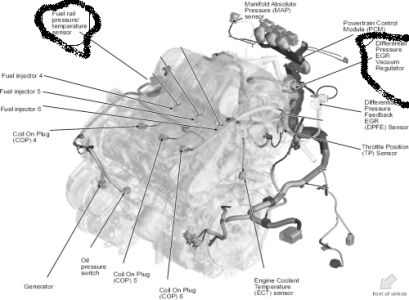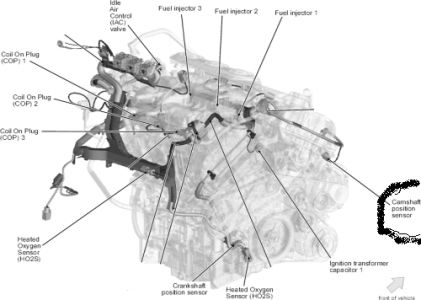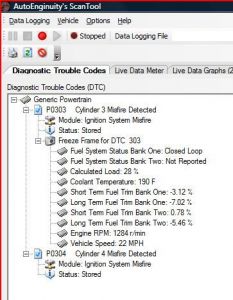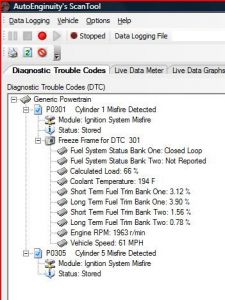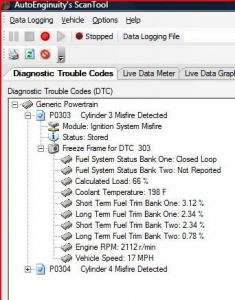In my efforts (in part to fix the problem, and also just as a tune-up), I have replaced: Spark Plugs, Upper and lower intake manifold gaskets, Idle Air control, Fuel Filter, Throttle Position Sensor, DFPE sensor, EGR valve, air filter, all 6 COP, fuel injector O rings, battery (which was dead) and the Camshaft Position Sensor.
I checked the MAF (it is a hot wire) - it is spotless, but I tried to clean it as well. No improvement. Cleaned the throttle body just for good measure, but couldn't find any significant blockage or deposits.
I also tried some fuel system cleaner with not much improvement - I took it down to the injectors and swapped a couple of them out to see if the misfire moved with them. It didn't - I still got the same codes. While I was down there, inspected the manifold and gaskets but didn't notice anything out of the ordinary.
I have looked for a vacuum leak, but was unable to find any - as far as I can see the hoses, etc are in good shape. Possible I missed something.
All of this work has resulted in some improvements - i.E. It idles better, accelerates better, has some more power, etc than it did. Still getting the CEL, still feels like it is running rough, still a lot of vibration and still a loss of power, especially just after it shifts up into the next gear on acceleration. Still has poor fuel economy also.
One of the reasons that it has taken me so long to diagnose this is that every time I replaced a part, I disconnected the battery, and for a couple of days it would run better. Then it would start running badly, and the CEL would come back on. I thought I finally had the right solution about a dozen times. Just recently realized that disconnecting the battery was resetting something in the computer. One time I got codes PO302 and PO306, disconnected the battery, reconnected it, and a day later got codes PO301 and PO305 - without doing anything else to the car.
After that, I replaced all 4 O2 sensors (150K, and I don't believe that they have ever been replaced). That was yesterday - took the car for a drive today. CEL has not come on, but when I accelerated the car skipped - almost like something either missed, hesitated, or misfired in the car. It feels better, but still has a hard time accelerating after it shifts up into the next gear - almost like it is shifting too early or something.
I'm afraid that I still haven't fixed the problem, and hoping to get it licked for once and for all. So any answers that might help me do that would be greatly appreciated. I have recently got an computer scan tool (AutoEnginuity)- I can read and monitor the codes and some live data streams if that would be of any use. If there is any other information that would be helpful or testing procedures that you would recommend, please let me know. I know this is a lot of verbiage, but I figure the more information the better.
Friday, January 1st, 2010 AT 2:41 PM
